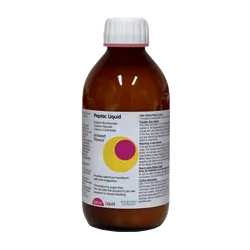A rapid self-test for the detection of ferritin in human fingerstick blood to determine iron deficiency and anaemia.
1 test per pack.
Available for expedited delivery. Delivery details
A rapid self-test for the detection of ferritin in human fingerstick blood to determine iron deficiency and anaemia.
1 test per pack.
Procedure
1. Wash your hands with soap and rinse with clear warm water.
2. Bring the pouch to room temperature before opening it. Open the foil pouch and remove the cassette.
3. Carefully pull off and dispose of the cap of the lancet.
4. Use the alcohol pad provided to clean the fingertip of the middle or ring finger as the puncture site.
5. Press the orange end of the lancet against the fingertip. The tip retracts automatically and safely after use.
6. Keeping the hand pointing downwards, massage the end of your finger to obtain a blood drop.
7. Without squeezing the dropper, place it in contact with the blood. The blood migrates into the dropper up to the line indicated. Avoid air bubbles, you may need to massage your finger again if the blood does not reach the line.
8. Put the collected blood into the sample well of the cassette by squeezing the dropper bulb.
9. Wait for the blood to be totally dispensed in the well. Unscrew the cap of the buffer bottle and add 1 drop of buffer into the sample well of the cassette.
10. Wait for the coloured line(s) to appear. Read results at 5 minutes. Do not interpret the result after 10 minutes.
Reading the Results
Wait for the coloured line(s) to appear. Read results at 5 minutes. Do not interpret the result after 10 minutes.
NORMAL: Two lines appear. Both T (test) and C (control) line appear. This result means that the ferritin concentration in blood is normal and that there is no potential iron deficiency.
ABNORMAL: One line appears. Only the control line appears (C). This result means that the ferritin concentration in blood is too low. You should consult a physician because it may be an iron deficiency.
INVALID: Control line fails to appear. Insufficient specimen volume or incorrect procedural techniques are the most likely reasons for control line failure. Review the procedure and repeat the test with a new test. If the problem persists, discontinue using the test kit immediately and contact your local distributor.

If you have purchased this item in the past please leave a review. Every review is entered into a draw to win a £50 voucher.
Write a review
save £2.00


save £0.26



save £1.93


save £1.50


save £1.20

save £2.00

save £2.26